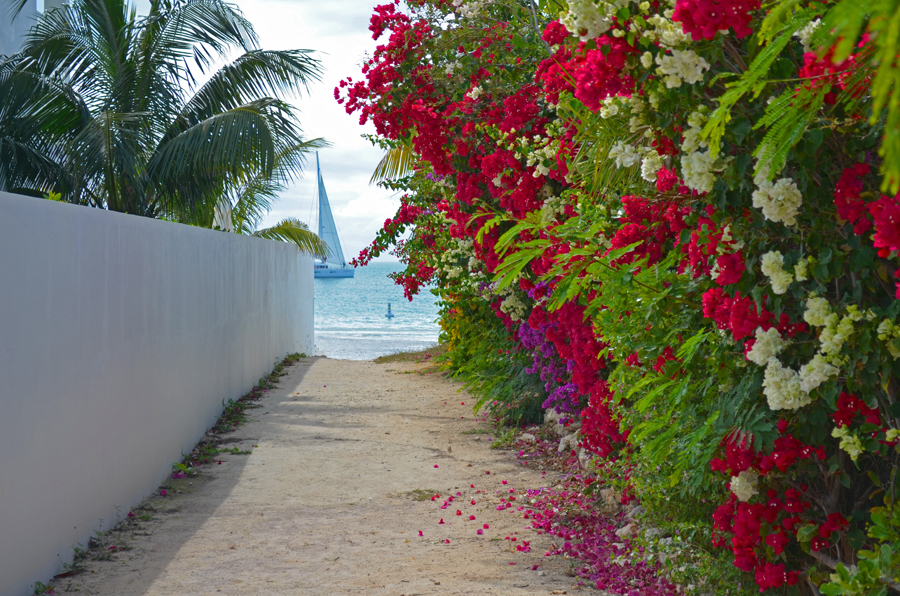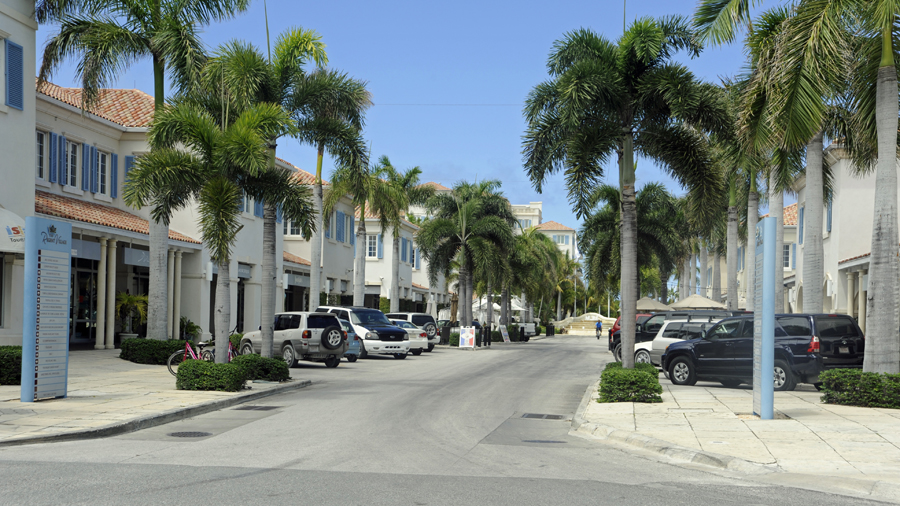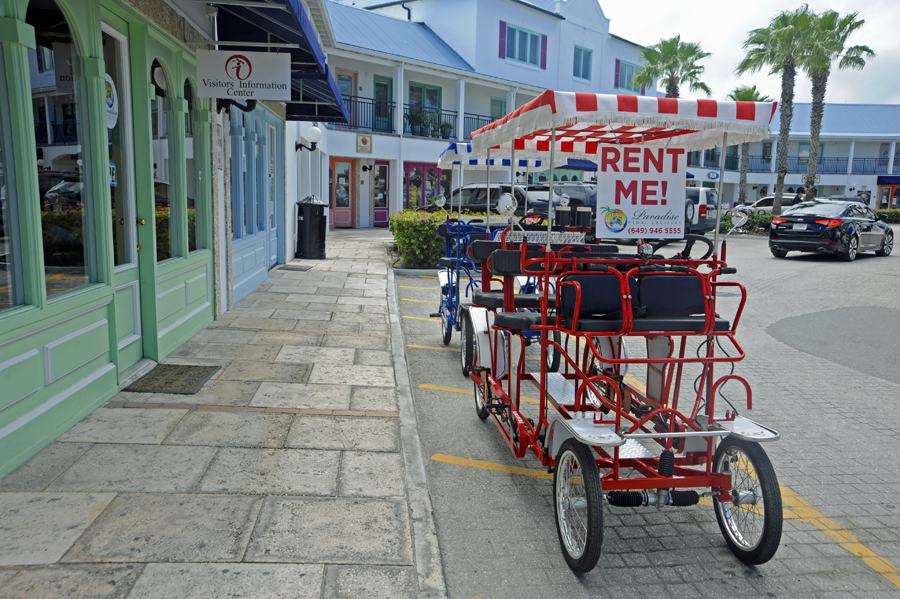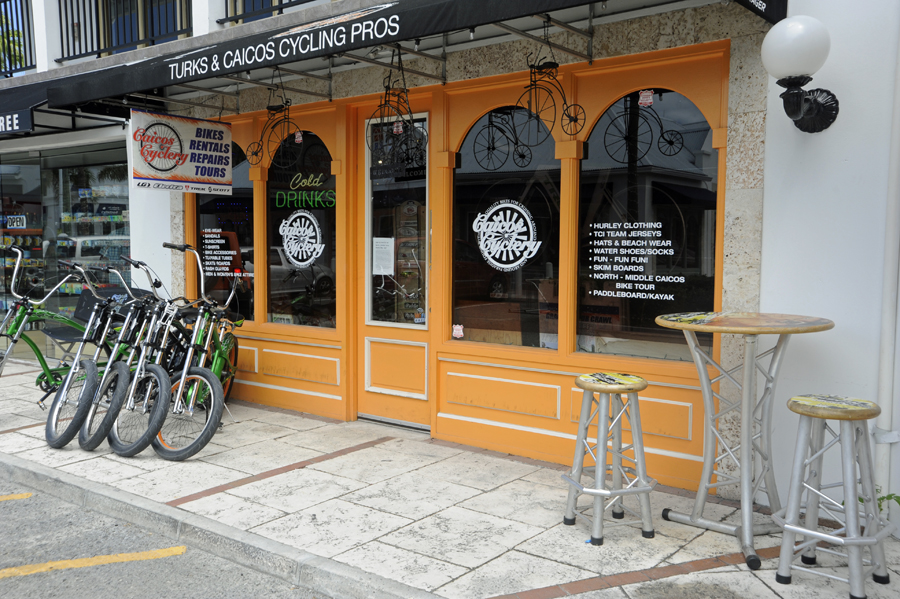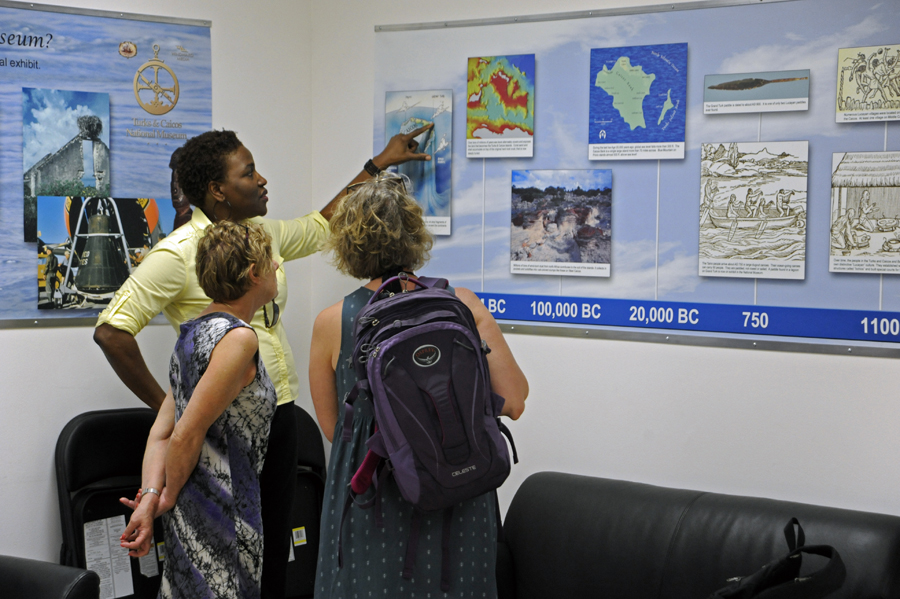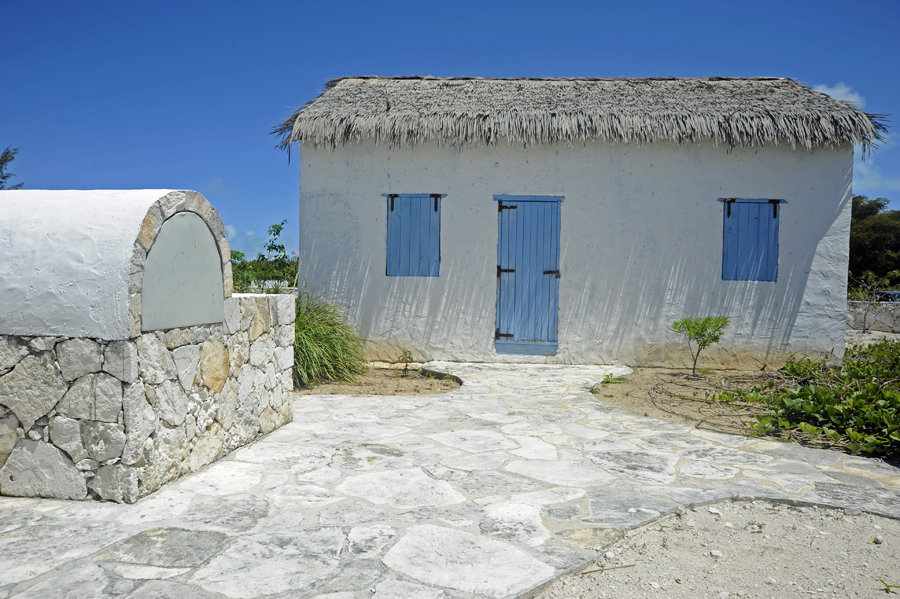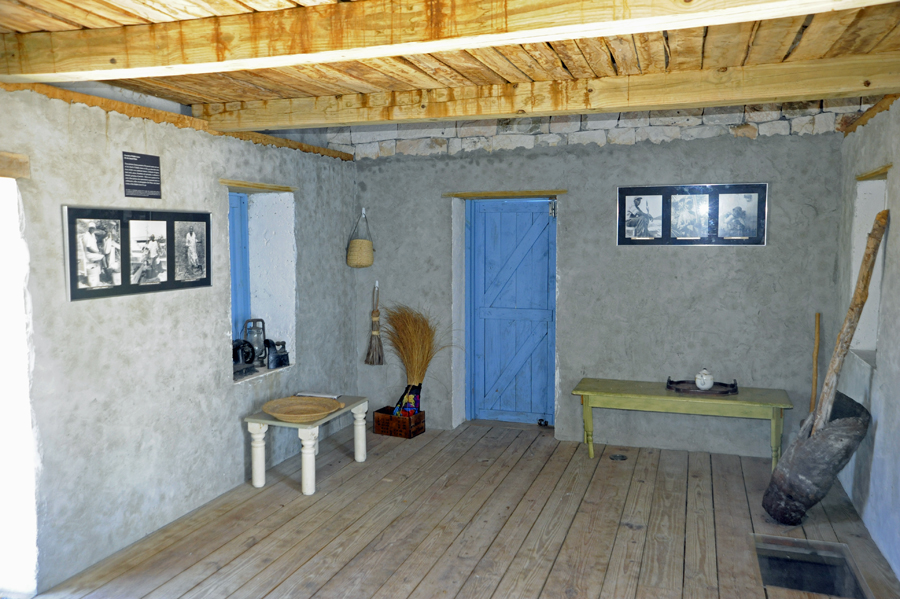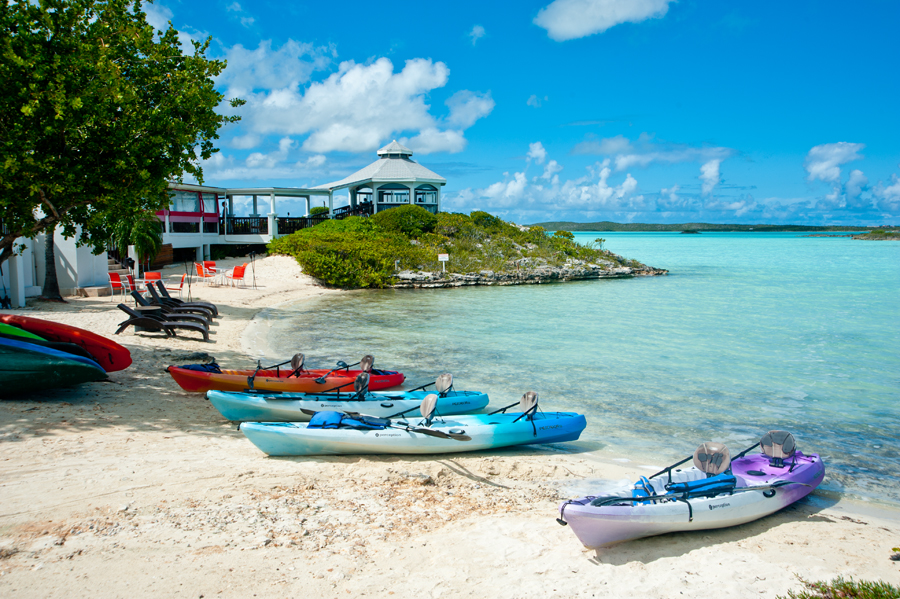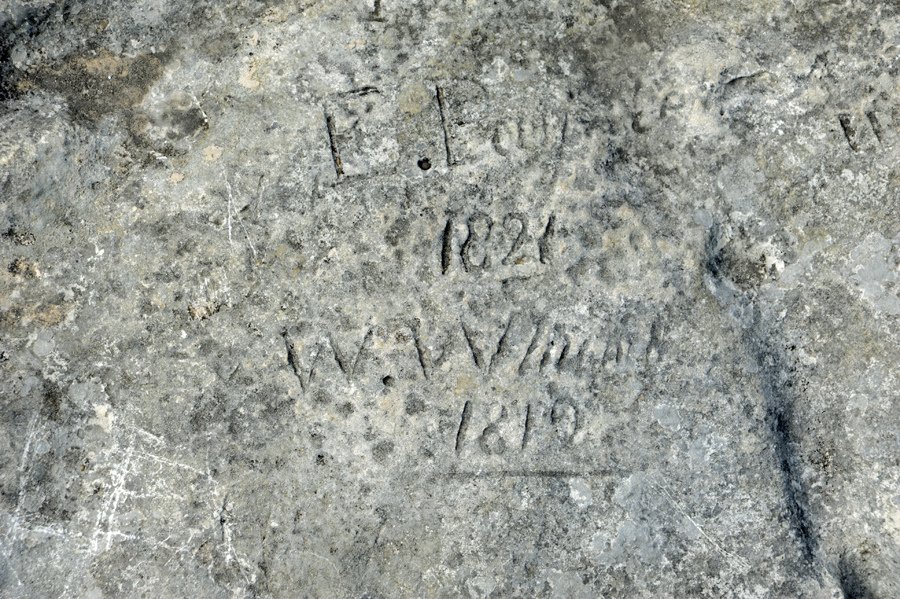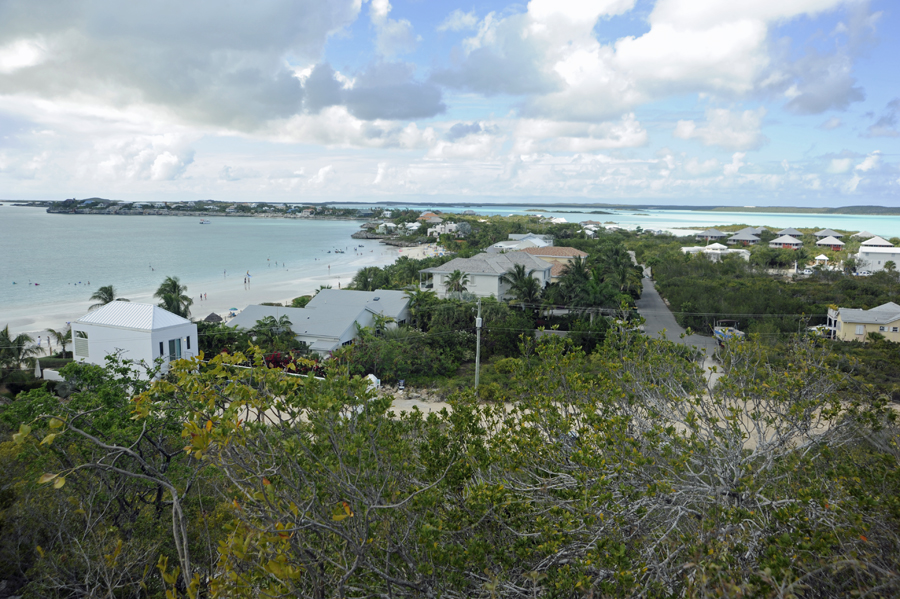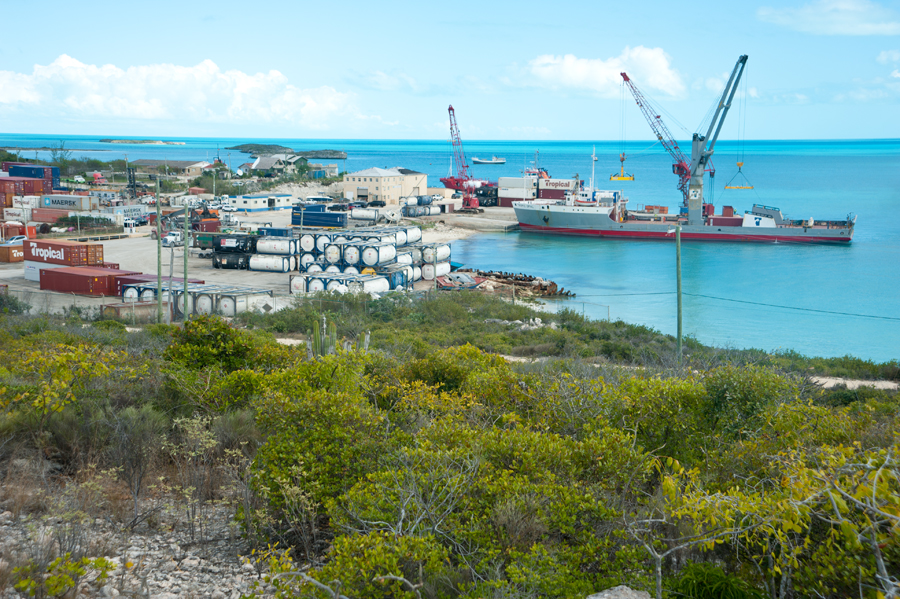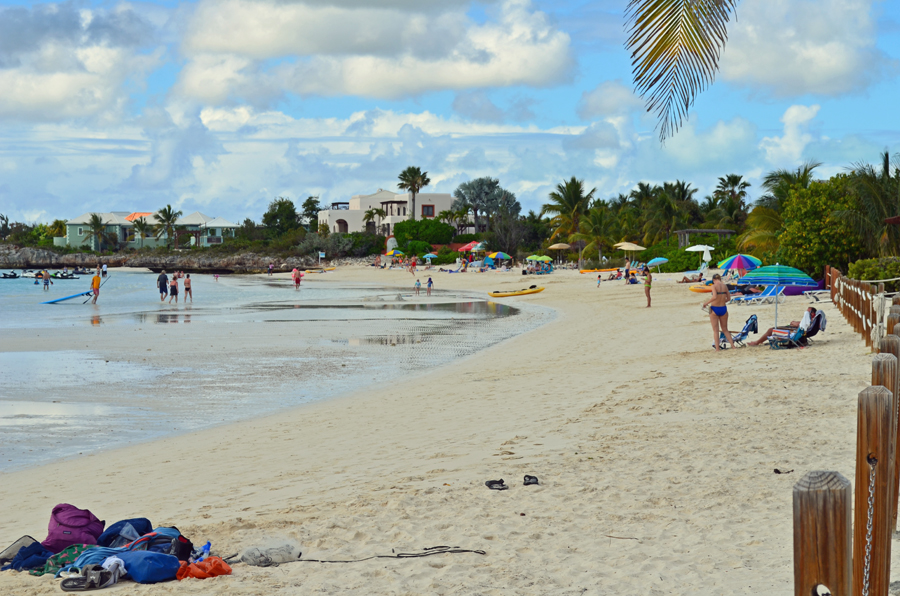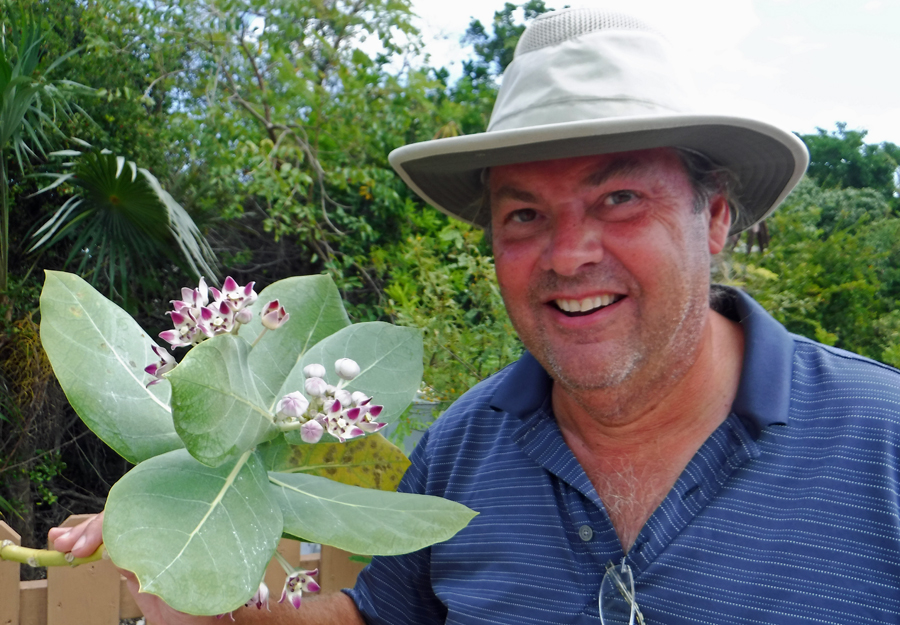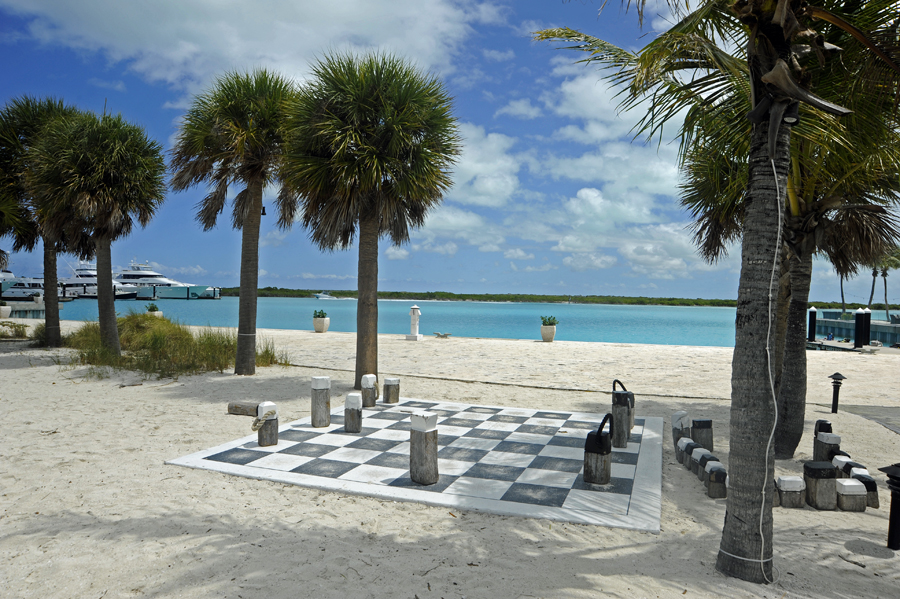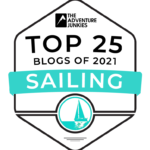Everything on Providenciales is new. In the early 1960 only about 500 people lived on the island. There were no cars or electricity. Then the building started. A huge Club Med was one of the first resorts. Exquisite beaches like those found on these islands attract tourist. Today the full-time population is about 30,000. And of course, there are cars and electricity. Tourists means resorts. Resorts mean shopping. Shopping means jobs. Most of the resorts are on the northern side of Providenciales. There are many and they are massive. Interestingly, there are no Marriott, Hilton or any other USA chains on the island but the tourist base seems mostly Americans and Canadians. Outside of the resorts is a tourist trap town called Grace Bay. It looks an awful lot like a few streets transplanted from Florida. Even though it is a tourists area, it is nice to have lots of choices when it comes to restaurants. One thing the Bahamas is not known for is its cuisine. We are struggling here not to eat out every day as we have found the food to be excellent. Within a ten minute walk from our dock we have five fabulous restaurants. And that’s just the ones we have tried, so far.
We toured the Providenciales history museum. Normally I would be very catty here and write something snide like; how can an island have a history museum when nobody really lived here prior to 1960. It was a very small museum. But here’s the best part and the part stopping me from writing something catty. The small entry fee included a private narrated tour. I am not fond of museums. Cindy loves history and museums. I go because she likes them. I am even less fond of museums that have the stupid placards to read and evoke more questions with the tiny bit of information offered. I will take a headset or a guided tour any day. I like to ask questions. Having someone who is knowledgeable and friendly makes the tour more like a conversation than a stuffy museum. I can honestly say I was enlightened by our visit and enjoyed the interaction. And, I learned a lot.
The Turks and Caicos Islands are pillars of limestone that reach up from the ocean floor some 10,000 feet below. The edges of these pillars are what SCUBA divers refer to as the wall. If someone were to walk out straight from the beach, the water remains relatively shallow at about 30-40 feet depth for about a ¼ mile. Then there is a sheer drop to about 10,000 feet. This wall has kept SCUBA divers returning year after year to these waters.
The first inhabitants of the islands were Lucayan and Taino Indians who are thought to have paddled boats here from Hispaniola or Cuba during 500-800 A.D. The museum has some pottery fragments and the remains of an old paddle to support this theory. The Indians were wiped out when ships arrived from Europe carrying disease or worse, captured them for enslavement. The islands remained relatively unpopulated for hundreds of years. As I mentioned earlier, Providencials has only recently added electricity and cars. In 1841 a Spanish slave ship landed off East Caicos. It is thought the captain made a serious navigation error and thought he was somewhere else. At this time the islands were already under British rule and slavery had already been outlawed by Great Britain with the Slavery Abolition Act of 1833. The 197 Africans aboard the boat were freed and became the first permanent settlers of the islands. The longest residing families here can trace their roots to this ship.
Our guide in the museum recommended a lunch place. At first she was hesitant because it was “all the way over on the other side of the island”. We drove the ten minutes to the other side of the island and enjoyed a fabulous lunch at Las Brisas. We sat in the gazebo at the very outer end of the restaurant and enjoyed views of Chalk Sound while we munched on breaded fresh fish. Also in this area and also recommended by the museum guide is an area called Sapodilla Hill. At the top of this hill are some carvings from the 1800’s. Keep in mind there were no people living here during this time and most likely the carvings are from shipwrecked sailors who meet peril on the reefs surrounding the island. I hiked to the top. It wasn’t easy. Cindy opted out. She is the wisest one in the marriage. The carvings were pretty unexciting. I can’t say I share the same enthusiasm as our museum guide about this attraction. However, the view from the top was stunning. One side of the hill overlooked the main Providenciales port. The other side offered views all the way to the northwestern tip of the island. I fell on my butt on the way down. My body is older than my brain thinks it is.

